An update on version 0.5xMon, 2 March 2020
Version 0.5x has been in development for a while now, and is rapidly taking shape, with the main focus of Lunar Ascent.Hi!
It has been a while since I posted anything here. The focus has been on getting the development of version 0.5x up-to-speed.
This post is a brief summary of some of the new features you will see in 0.5x, as well as some plans on the roadmap.
Version 0.5 has a focus on two major features for Apollo.1) Lunar ascent, and CSM rendezvous and docking
2) Atmospheric Entry
The 0.5x update will be split into two releases where 1) will be part of 0.50 update, and 2) will be part of 0.55 update. Development has started on both, and 1) is getting close to a release for the Test Pilots.
In addition, 0.5x will have some other nice general features, fixes and a lot of general improvements.
Lunar Ascent & RendezvousFor those familiar with the Lunar Ascent and the LM/CSM rendezvous will know that this is a complex operation. There are a lot of procedures involved, and many new systems will be used. In addition, you will need to control two spacecrafts at the same time. The LM during ascent, and the rendezvous burns, and the CSM for docking, and during the rendezvous burns.
The first part of the ascent is where the Lunar Module separates from the Descent Stage and uses it as a launch pad. The APS (Ascent Propulsion System) is used to take the Lunar Module ascent stage from the lunar surface into an elliptic orbit around the Moon, with the same inclination etc as the CSM. The CSM is in a larger circular orbit.
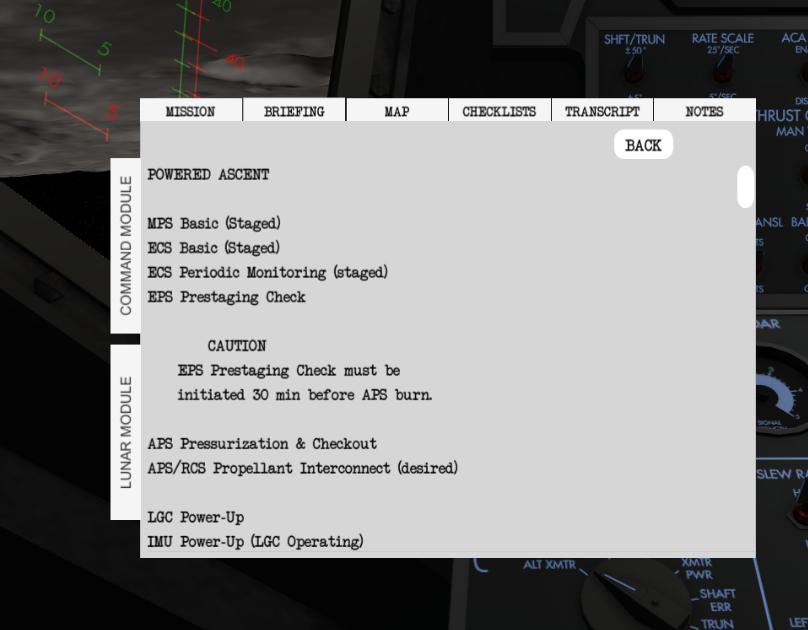
The initial orbit has and Ap altitude and Pe altitude of 17km x 83km. Once the LM reaches Ap, the orbit is circularized using a burn named Coelliptic Sequence Initiation (CSI). After this, an optional Constant Delta Height (CDH) burn and an optional Plane Change (PC) burn is used to align the LM orbit with the CSM orbit, as well as ensuring that the LM orbit is in a circular orbit 15 nm below the CSM circular orbit.
After the above burns, the LM is catching up with the CSM (it works in a similar manner as when the Gemini spacecraft is catching up with the Agena before the rendezvous burn). The Lunar Module is using the rendezvous radar to track the CSM, and have an attitude that where the LM is facing the CSM, and vice versa.
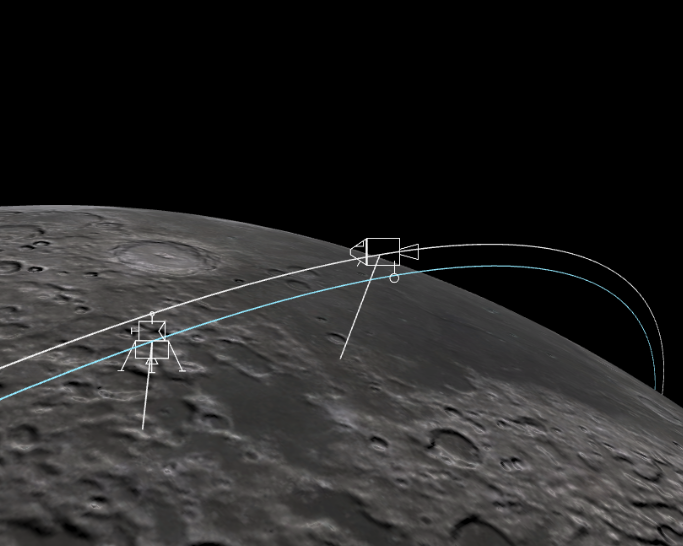
At the correct point in the orbit, where the line-of-sight (LOS) from the LM to the CSM and the flight path of the LM has an angle of 26 degrees, a relative motion burn takes place in the LOS direction. The LM is thrusting directly towards the CSM, and will now be on a rendezvous path. This burn is named the Terminal Phase Initiation (TPI), the burn to intercept CSM's orbit). A TPM (Terminal Phase Mid-course correction burn) takes place after this, followed by a series of small breaking burns named the Terminal Phase Final (TPF) - placing the LM in a similar orbit as the CSM.
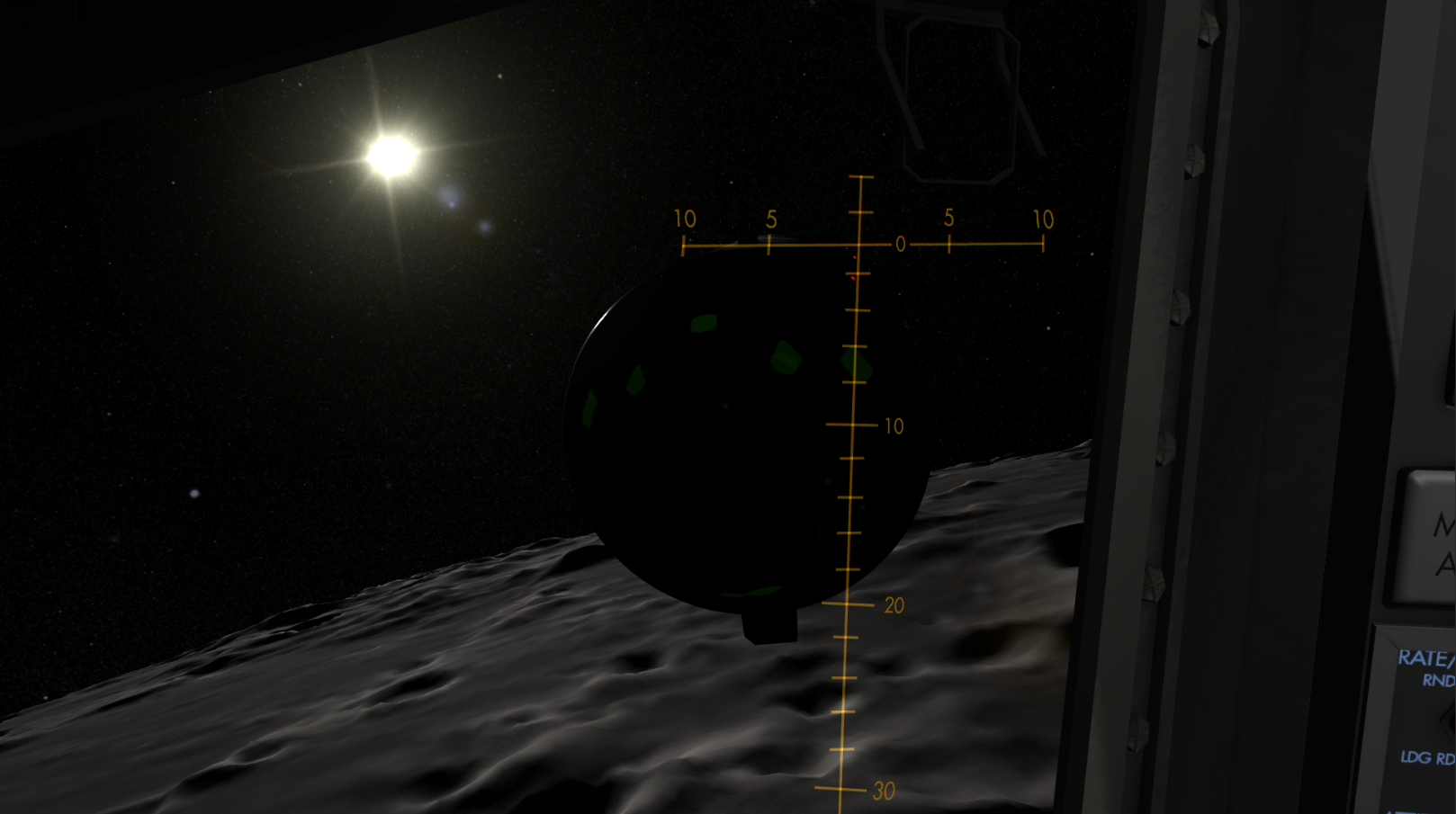
All of these burns are planned using P32 and P3X, and executed manually using P41 and the RCS system.
There will be two methods of rendezvous in Reentry, one simplified and one advanced. The simplified method will still use P41 to execute the burns, but will use P30 to plan the burns, with parameters received from MCC. The simplifies rendezvous will have the CSI burn, and then a direct rendezvous hohmann burn, followed by rendezouvs and docking.
The advanced method will use P32 to plan the burns, and then P3X (one P3X for each burn like CSI, CDH, etc). The simplified method is now complete, and will be part of the initial release, while the advanced still needs some development and will be part of a later update.
 New checklist system
New checklist systemThe entire checklist system in Reentry has also been replaced by a new system. It looks similar to what you are used to but is now fully file-based. This means that each checklist has a dedicated file on your computer. A new checklist editor accessible using the in-game console can be used to add your own checklists, as well as modifying existing ones. When a mission is loaded, the checklist tabs of the Mission Pad will be procedurally generated based on the files it finds, and their data.
The checklist editor can also add Checklist Guidance Steps to it (if a checklist has one or more steps, the RUN button will be visible). A record feature will allow you to record the checklist steps that will execute when a player press RUN.
The DEFAULT checklists will be installed each time you run the simulator. It will detect if a default checklist is missing, and install it if so. If you have created modifications to a checklist, these modifications will persist. If you wish to reset it, just delete it and it will be installed the next time you start the simulator.
Each time you add a checklist, you will need to restart the mission for it to be visible. However, if you just make changes, the changes will be visible the next time you open the modified checklist using the mission pad.
Checklists can also have images (png).
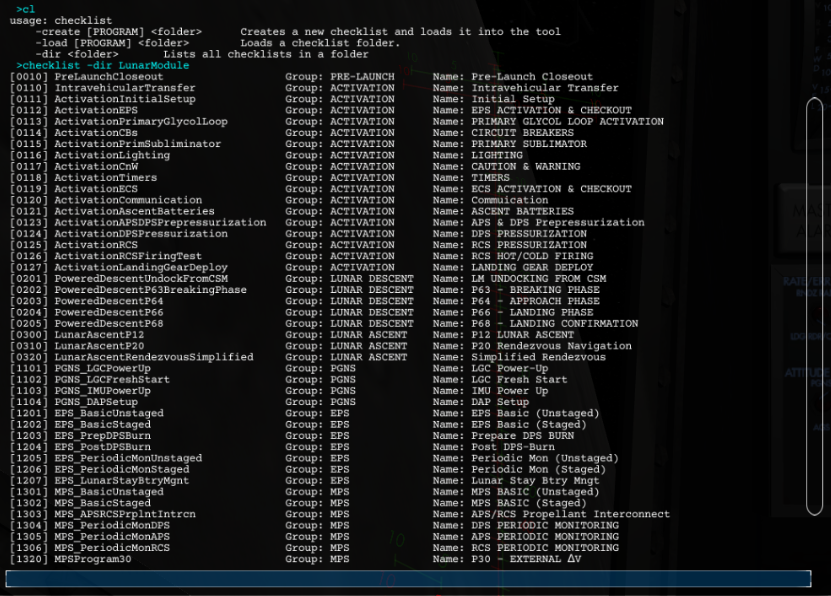
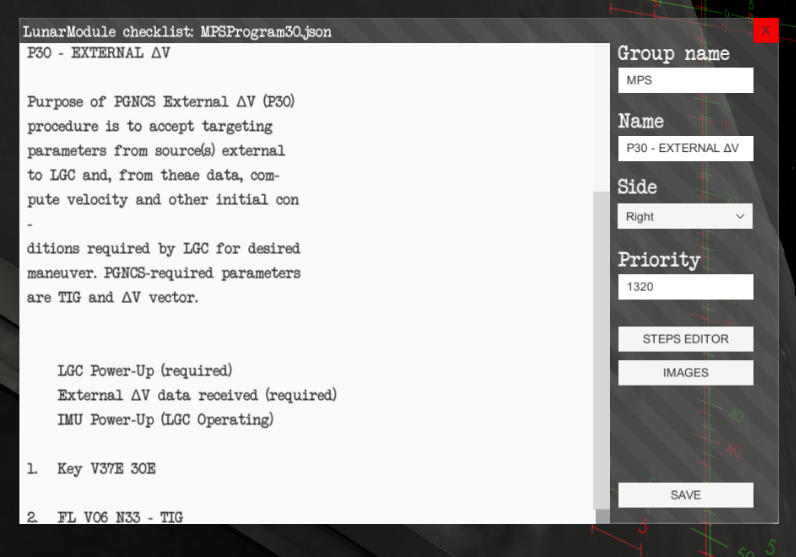
The checklist system is applied across Reentry, meaning it is used in Mercury and Gemini as well as Apollo.
New Apollo Co-Pilot viewThe new co-pilot screen allows you to give commands to your fellow crew members. You can ask the Lunar Module Pilot to guide you during the LM powered descent, or help you slew the rendezvous radar. Each of these features are tools and aids to simplify some tasks, and will used dedicated UI items. More features will be added.
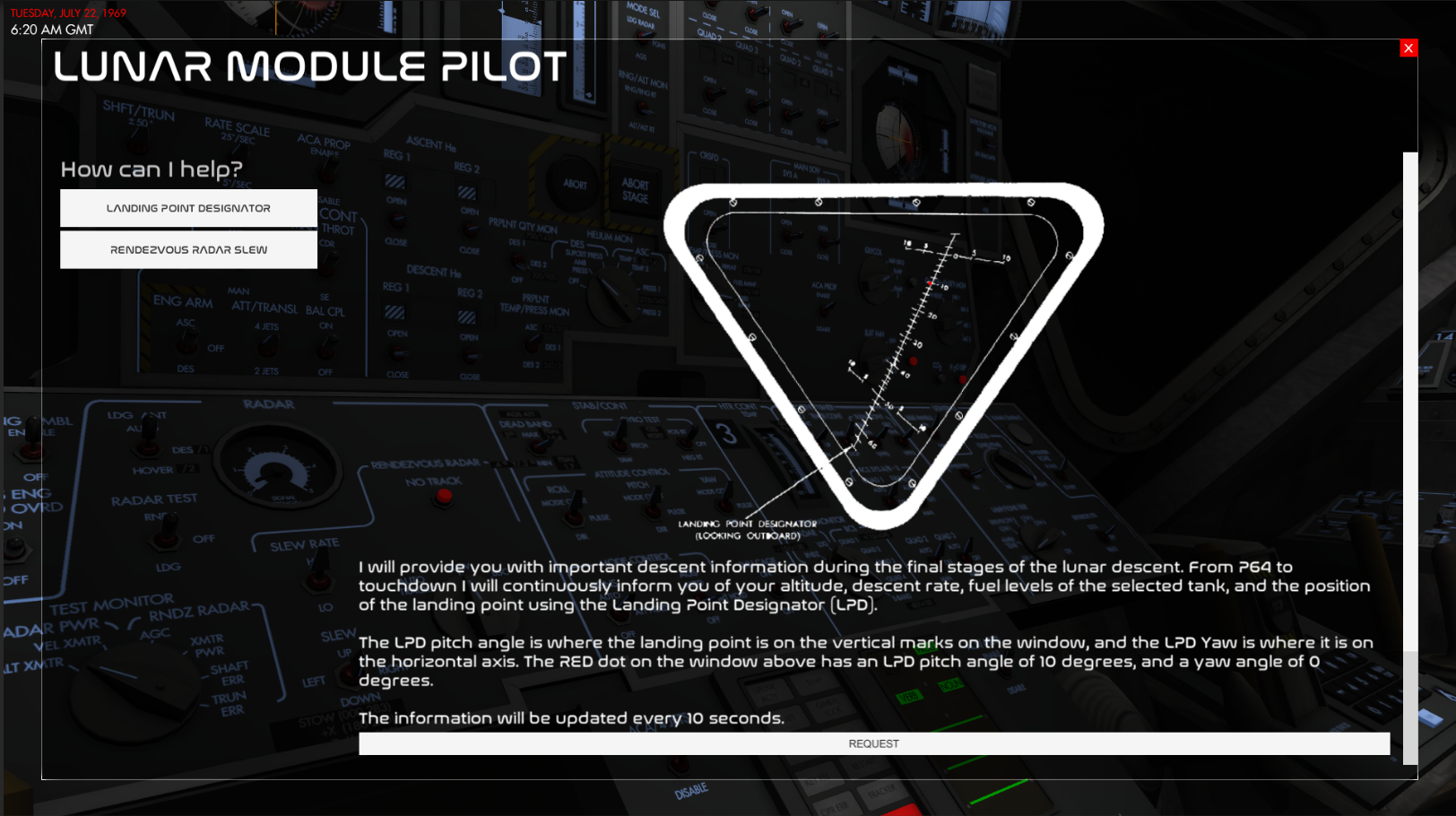
For those who previously has done a powered descent has noticed that the LMP will start to tell you some important data, and that this data clutters the mission flow using the mission command UI. This has now been moved to a chat box bubble-like UI element, and can be enabled and disabled to your liking. All of the verbal aids from a co-pilot will appear in this view. Each update will not be a new message, but will replace the existing content, so it works more like a data view instead of individual messaged (like Verb 16 in the AGC/LGC)
Also, a RR slew aid has been implemented, where you get the shaft and trunnion angle changes needed to target the CSM.
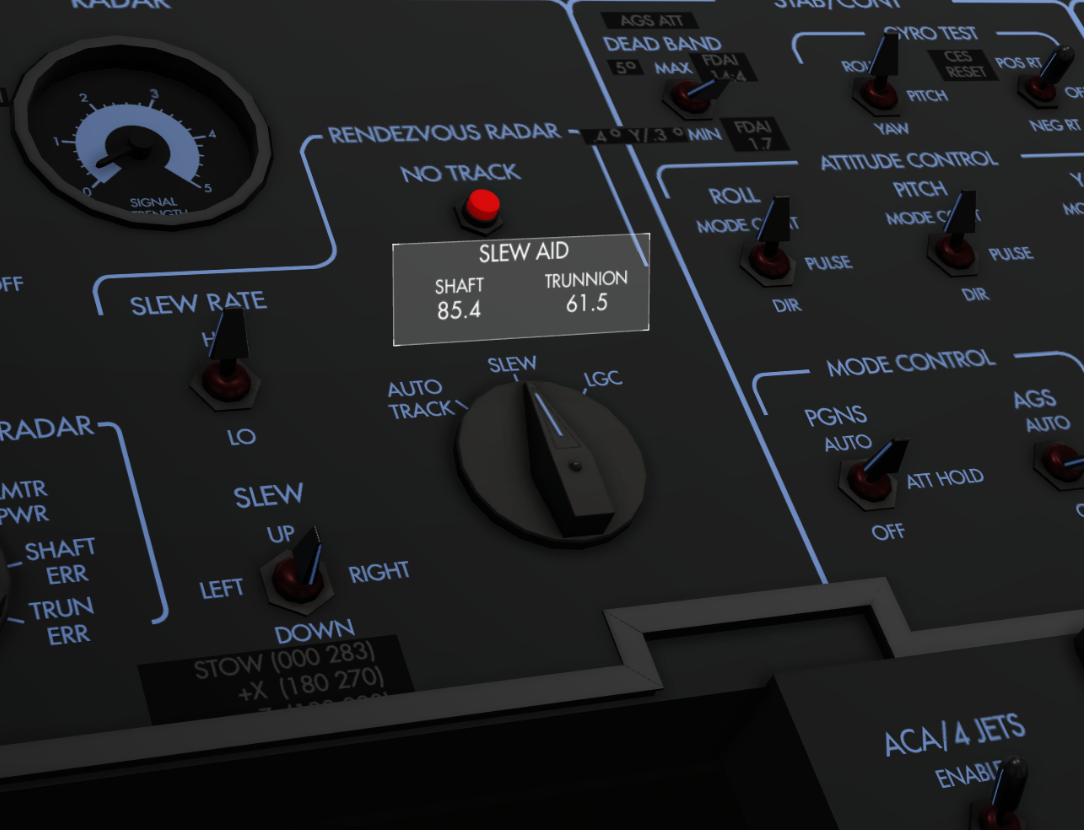
I have not yet decided if this should use the UI above, or the same verbal chat box used by the co-pilot.
So, this brief update ended up being rather long, but I think this covers the major features you will see when 0.50 is released. 0.55 will have the new atmospheric entry model, and will be covered in a later post.
Thanks for reading!










 Similar topics (5)
Similar topics (5)